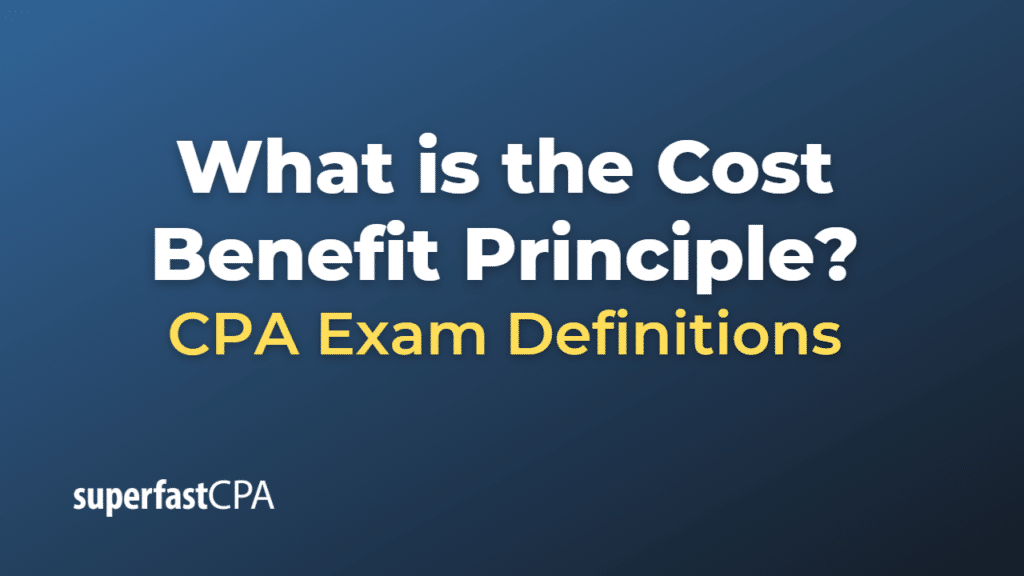Cost Benefit Principle
The Cost-Benefit Principle is a fundamental concept in economics and decision-making that states that an action or decision should only be taken if the benefits derived from it outweigh the costs incurred. In other words, a rational decision-maker should pursue an action, project, or investment only when the additional (marginal) benefits are greater than or equal to the additional (marginal) costs.
The Cost-Benefit Principle is used as a basic guideline for determining the most efficient allocation of resources and for making choices that maximize overall welfare or utility. It helps individuals, businesses, and governments make informed decisions by weighing the pros and cons of different options.
For example, a business may use the cost-benefit principle to decide whether to invest in a new project or expand its operations. It would estimate the expected costs, such as initial investment, maintenance, and operating expenses, as well as the expected benefits, such as increased revenues, cost savings, or improved market share. If the benefits exceed the costs, the business would likely proceed with the investment, as it would be considered economically rational.
It’s important to note that the cost-benefit principle does not always lead to perfect decision-making, as it can be challenging to accurately quantify all costs and benefits, especially those that are intangible or difficult to measure, such as social or environmental impacts. Additionally, individuals and organizations may have biases or imperfect information that can influence their assessments of costs and benefits. Nonetheless, the cost-benefit principle serves as a useful starting point for decision-making and resource allocation.
Example of the Cost Benefit Principle
Let’s consider a fictional small business owner, Jane, who runs a successful bakery. Jane is thinking about purchasing a new industrial-grade oven to increase her production capacity and meet the growing demand for her baked goods.
To make an informed decision, Jane applies the cost-benefit principle to assess whether the investment in the new oven is worthwhile.
- Identify and estimate the costs:
- Purchase price of the oven: $15,000
- Installation cost: $1,000
- Increased electricity consumption: $200 per month
- Identify and estimate the benefits:
- Increased production capacity: Able to produce 50% more baked goods, resulting in an estimated $2,000 increase in monthly revenue
- Improved energy efficiency: The new oven uses 20% less energy per baked item, resulting in an estimated $100 in monthly cost savings
Now, Jane needs to compare the costs and benefits:
Total upfront costs: $15,000 (purchase price) + $1,000 (installation) = $16,000
Monthly costs: $200 (increased electricity consumption)
Monthly benefits: $2,000 (increased revenue) + $100 (cost savings) = $2,100
As the monthly benefits of $2,100 outweigh the monthly costs of $200, Jane expects a net benefit of $1,900 per month. To estimate how long it will take to recover the upfront costs, Jane calculates the payback period:
Payback period = Total upfront costs / Monthly net benefit = $16,000 / $1,900 ≈ 8.42 months
According to the cost-benefit principle, Jane should invest in the new oven, as the benefits outweigh the costs, and the payback period is relatively short. After recovering the initial investment in approximately 8.42 months, Jane would continue to enjoy increased revenue and cost savings, making the investment economically rational.
However, Jane should also consider other factors, such as the availability of funds, financing options, opportunity costs, and the potential impact on her existing operations, before making a final decision.













